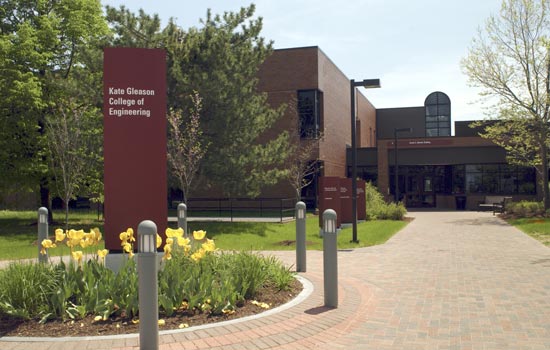RIT researcher aims to battle hearing loss
Inner-ear micropump will provide gene therapy
A. Sue Weisler
The Kate Gleason College of Engineering
Permanent sensorineural hearing loss and deafness affect about 10 percent of the population in modern societies, with more than half of those age 65 and older impacted. Current research aims to address the biological basis for auditory dysfunction, providing opportunities to overcome limitations of cochlear implants and hearing aids. “Pioneering studies in the areas of auditory gene therapy and chemotherapy have produced exciting results showing potential for protection and regeneration of sensory systems in the inner ear,” explains David Borkholder, an assistant professor of electrical engineering in the Kate Gleason College of Engineering. “Complexity of the disease as well as the broad impact to numerous cell types suggest more elaborate treatments are needed to achieve full restoration of hearing in animal models and for translational results in human clinical trials.” Borkholder ’92 (B.S. microelectronic engineering), the principal investigator on the project, is collaborating with the University of Rochester Medical Center to develop an implantable, refillable, variable-flow micropump platform for intracochlear drug delivery for deafness therapy research. Initially, a device will be designed for and tested using mice. “This micropump will enable chronic, calibrated delivery of multiple therapeutic agents that is not possible with existing pump technologies,” explains Borkholder, an expert in biomedical engineering and micoelectromechanical systems.
Research is supported by a five-year $922,048 Mentored Quantitative Research Development Award from the National Institutes of Health—National Institute on Deafness and Other Communication Disorders. The grant is the largest ever from NIH to RIT, outside NTID. The project is expected to provide a detailed understanding of acceptable dose and timing profiles for intracochlear drug delivery in mice without detriment to cochlear function. The technology is scalable to use in humans and may be particularly useful in pediatrics. Robert D. Frisina, a professor and associate chair of otolaryngology and professor of biomedical engineering and neurobiology and anatomy at the University of Rochester Medical Center, is serving as research mentor. Frisina is also Distinguished Researcher in Biological Sciences in RIT’s College of Science and professor of communication sciences and associate director of the International Center for Hearing and Speech Research at NTID. “Although some people are helped with hearing aids, the majority of those with hearing loss or hearing-related balance disorders—some 30 million people—go untreated,” Frisina says. “Future biomedical interventions will be aimed at treating the underlying biological problems that cause permanent sensorineural hearing loss rather than trying to amplify and filter incoming sounds with hearing aids. “A critical step for implementing research aimed at repairing or restoring nerve cells that are damaged or missing in the inner ear is to develop more precise, calibrated micropumps for delivering chemotherapeutic, gene-therapy or stem-cell therapeutic agents, first for animal research, then for clinical trials.
This project is a critical step forward in developing microfabricated pumps. Longer-term goals include developing and testing inner ear micropumps for clinical applications to treat human inner-ear hearing and balance problems.” Working with Borkholder and Frisina are XiaoXia Zhu, a UR postdoctoral research fellow; Dean Johnson, an RIT microsystems engineering doctoral student; and Sean O’Brien and Avery Sonnenburg, RIT engineering master’s students. Lynn Fuller, RIT professor of microelectronic engineering, and Thomas Gennett, RIT professor of chemistry, are consultants on the project.















